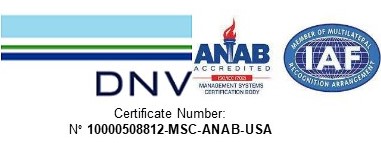Low water challenges continue to disrupt commerce on the shallow- and deep-draft industry, low river stages are causing navigation challenges around dredging assignments and groundings on the shallow-draft channel above Baton Rouge but continues to impact maritime operations across the Mississippi River Ship Channel in 2023.
Yesterday, the U.S. Army Corps of Engineers announced an update on the migration of the saltwater wedge yesterday, that was expected, but still at least potentially historic. The USACE is preparing for the potential construction of the saltwater sill, the saltwater sill was required in 2022 (October) but has never been constructed in back-to-back years, the average has been about every ten years (it did almost happen in 1988/1989). The hydrology of the Mississippi River is ever changing as 2019 was the first time the Bonnet Carré Spillway had been operated in back-to-back years (2018/2019) and twice in the same year and briefly in 2020 (three years in a row).
The saltwater wedge migrated almost 31 miles upriver since low water conditions have continued to prevail, the wedge was tracked at Mile 13.3 Above Head of Passes (AHP) on June 16 and on June 27 the wedge was estimated by the USACE to be at Mile 44.2 AHP. The USACE always tracks the wedge during low water conditions, the sill is designed to protect freshwater intakes, no decision have been made but everyone is tracking the weather and precipitation. The USACE will keep the navigation industry in the loop and has already begun discussions with dredge contractors – game of Mississippi River chess with dredges being moved to help to assist and maintain commerce and provide freshwater both, impacts to the shallow-draft (tows and barges) and deep-draft (ships) channel(s) will continue.
The Coalition will also share updates as received from the National Oceanic and Atmospheric Administration’s (NOAA) National Weather Service’s (NWS) Lower Mississippi River Forecast Center (LMRFC) and from other government agencies on low water conditions. There are indications of precipitation, but long-term forecast are only predicting minor changes at this point, low water levels expected to continue however the long-range is limited to precipitation over 48-hours – noted reports below on expected conditions.
The U.S. Coast Guard (USCG) recently issued the attached Marine Safety Information Bulletin (MSIB) Volume XXIII Volume: 041 detailing the impact or potential impacts related to low water conditions. The MSIB requested that ports and facilities report low water impacts to the USCG.
“Ports and Facilities are requested to report impacted operations due to low water conditions (e.g., reduced drafts, interruptions to mid-stream operations, etc.) to faciliticsnola@uscg.mil.”
The third attachment is a document provided by the USACE St. Louis District to detail channel conditions – the St. Louis District as the Navigation Channel Condition Status Report as issued on June 29, 2023. This report provides a good list of the activity related to low river levels with closures and channel or channel infrastructure maintenance projects and documented areas of shoaling to include river stage data relevant to the date of the report.
The following chart details the stage readings at Cairo, IL over the last year (June 30, 2022, to June 30, 2023) to demonstrate the stage level in June 2022 and show that the stage was higher at this time last year than it is at present. In 2022 the gage at Cairo measured just under 20 feet – 19.11 feet on June 27, 2022, at 0800 hours. The stage at Cairo at 1000 hours today was 12.77 feet with a 24-hour change of + 0.74 feet (Precipitation driven) stage forecast for tomorrow 13.00 feet (slight increases).
There is also an attached graphic provided by the USACE to highlight Historical Low River Stages for Cairo, IL during previous droughts.
The National Weather Service has announced the country is being influenced by the prevailing El Nino weather pattern, that can be linked at times to higher precipitation levels “precipitation increases significantly”. Although the location of precipitation is also a critical factor in increasing stages on the Mississippi River.
During 2019 and 2020 there was a lot of media attention focused on increased precipitation leading to more high river stages with multiple records being set such as the increased operation of the Bonnet Carré Spillway. The Spillway was operated in back-to-back years 2018/2019 for the first time ever and repeated in 2019/2020 and then the first and only time (so far) the flood control structure was operated twice in the same year 2019. One of the caveats related to the increased precipitation forecasts was that more extreme weather events would also increase – thus extreme droughts or increased low water events were included in the same weather briefings. However, there has not been a crest recorded on the Carrollton Gage higher than 14.5 feet since 2020 the last operation of the Bonnet Carré Spillway with a crest of 17.61 feet on April 16, 2020, eclipsing the crest from 2019 at 17.25 feet on May 10, 2019.
The USACE responded in 2022 to the low water event by building the Saltwater Sill at approximately Mile 63.8 Above Head of Passes to protect the drinking water for the city of New Orleans, on average the sill construction has been required every 10 years. Before last year the sill was last constructed during the drought of 2012, a major precipitation event could indeed change the forecast quickly as the majority of forecast only include precipitation expected to fall in the next 48-hours.
The graphs below are reproduced from NOAA’s National Weather Service website and detail the latest forecasts for Cairo (IL) and New Orleans (LA) the forecasts represent an experimental product to account for the complexity of accurately predicting long-range precipitation. These forecast projects stage levels based on expected precipitation for 2 days (top) and 16 days (bottom) and was developed within the North American Ensemble Forecast System (NAEFS) computer model and highlights Quantitative Precipitation Forecasts (QPF). Along with the forecasts, a shaded area is also provided to indicate uncertainty for the forecast each day in the future. These plots are experimental and not an official forecast product.
CAIRO QPF FORECAST:
NEW ORLEANS QPF FORECAST:
The 24- and 48-hours predictive precipitation charts below are reproduced from the National Weather Service, there is much needed precipitation happening or forecasted for areas demonstrated in the two precipitation charts reproduced below including systems across the western states and Pacific Northwest and across the Mississippi River Basin. Increases to river gages may continue to have positive impacts on stages level, as a rule of thumb a rise at Cairo (IL) takes approximately 20 days to reach New Orleans (Carrollton Gauge).
24-HOUR QPF FORECAST:
48-HOUR QPF FORECAST:
The information provided below is shared by NOAA’s National Water Center (Tuscaloosa, AL). The quoted material below is reproduced from today’s prototype documented in the National Hydrologic Discussion:
“Synopsis:
Isolated flash, urban, and small stream flooding threat in the Middle Mississippi and Ohio Valleys through the weekend… Continued potential for isolated flooding impacts in the Mid-Atlantic and Northeast… Potential isolated flooding impacts in the Front Range into the Central Plains today into Saturday and again in the middle of next week… Flooding possible due to increased snowmelt across the Southern Sierra Nevada…”
Discussion:
.Middle Mississippi and Ohio Valleys…
Isolated flash, urban, and small stream flooding will be possible through this weekend as additional rounds of locally heavy rainfall (3-day totals of 1 – 3″) impact the region. Widespread rainfall of 1 – 2″ (MRMS) has already fallen across portions of northern MO, southern IA, central IL, southern IN, and western KY over the past 24 hours. Heavier amounts of 3 – 5″ of rain has fallen across portions of the lower Wabash (IL/IN), lower Green (KY), and lower Ohio (IN/KY) increasing the overall soil saturation and resulting in recent flash flooding impacts. Despite the recent rainfall, much of the region has been in moderate to extreme drought (USDM) which should limit any river flooding impacts. River forecasts and river ensemble forecasts tend to support this, along with the recent minimal response of rivers and streams from this recent rainfall.
The first round of rainfall (1 – 2″) is expected this evening, and is likely not fully captured in the HRRR-Forced National Water Model (NWM) Short Range Forecast (SRF) however, the GFS-Forced Medium Range Forecast (MRF) continues to signal the potential for rapid-onset flooding (ROF) within the next 24 – 48 hours with generally low-end probabilities (25%) for ROF across portions of southern IA, much of IL, and the remaining Ohio Valley. The MRF Maximum High Flow Magnitude (MHFM) forecast suggests isolated lower annual exceedance probabilities (AEPs) generally on small streams suggesting isolated small stream flooding impacts. As the event becomes within range of the NWM SRF, the SRF will likely provide better detail in both placement and magnitude of potential flooding impacts. Given the already recent rainfall and resultant flooding impacts, some of the more saturated areas will be more susceptible to additional flash, urban, and small stream flooding.
.Mid-Atlantic and Northeast…
The threat for isolated flash, urban, and small stream flooding impacts will continue through early next week as multiple rounds of locally heavy rainfall affect the region. Due to recent heavy rainfall, soils have become wet to near saturated, especially in New England (soil moisture percentiles greater than 70%, CPC and NASA Grace), and streamflows range from normal to much above normal compared to historic flows (USGS). These antecedent conditions suggest an increased susceptibility for new flooding impacts in these regions, with decreased soil infiltration capacity leading to increased runoff and decreased in-channel storage increasing the chance for high water conditions and flooding along small streams and rivers.
The first round of rainfall arrives on day 2 (Sat) followed by another on day 3 (Sun) with daily rainfall totals up to 1.5″ possible lighter rainfall persists through day 5 (Tue). The NWM MRF continues to indicate only isolated ROF signals, with ROF probabilities less than 25% through day 5 (Tue). In addition, MMEFS indicates that widespread river flooding is not expected. However, considering the antecedent conditions, new flooding impacts in the region cannot be ruled out, though the exact location and magnitude remains uncertain.
.Front Range into the Central Plains…
Thunderstorms today will bring up to 2″ of rainfall to parts of the region. RFC QPE indicates 7-day rainfall of 200 – 300% of normal for northern NE/WY and SD, whereas rainfall has been below normal for the southern portions of the Central Plains. These dry conditions, along with near to well below normal streamflows and generally sandy soils, will help to mitigate the flood potential over areas in the southern Central Plains that will see rain today. The NWM SRF ROF probabilities are very limited in coverage with a few hotspots showing near the NE/KS/CO border and in north-central NE, though these generally remain below 50%. AEPs for forecast streamflows are generally between 20 – 50%, with isolated values below 10% (SRF MHFM). This indicates an isolated potential for flash, urban, and small-stream flooding.
The heavier rainfall chances generally taper off late tomorrow morning for the Central Plains until day 5 (Tues) when both WPC guidance and GFS guidance start to increase QPF. The GFS, which forces the NWM MRF, is currently showing about half of the QPF of what WPC guidance is. This indicates that the NWM MRF signals may be underdone but this will most likely change as we move into the beginning of next week. Current NWM MRF 5-day ROF probabilities for areas expected to receive precipitation going into the middle of next week are generally below 25%, with AEPs at or above 50%. Though this does not provide much confidence in the potential for flooding, it also does not incorporate the full event or the potential of higher QPF that WPC is forecasting.
MISSISSIPPI RIVER STAGE UPDATES:
The Carrollton Gage reading at 0900 hours today was 3.2 feet with a 24-hour change of + 0.17 feet.
The National Oceanic and Atmospheric Administration’s (NOAA) National Weather Service Extended Streamflow Prediction (28-Day) for the Carrollton Gage issued today forecast the stages will remain steady near 3.0 feet over the next week and then resume a slow fall to 1.9 feet on July 28, 2023. Low water pattern expected to continue barring major precipitation events that will be recorded in future updates, concerns of low water conditions continue.
With You,
Sean
Sean M. Duffy, Sr.
Executive Director




